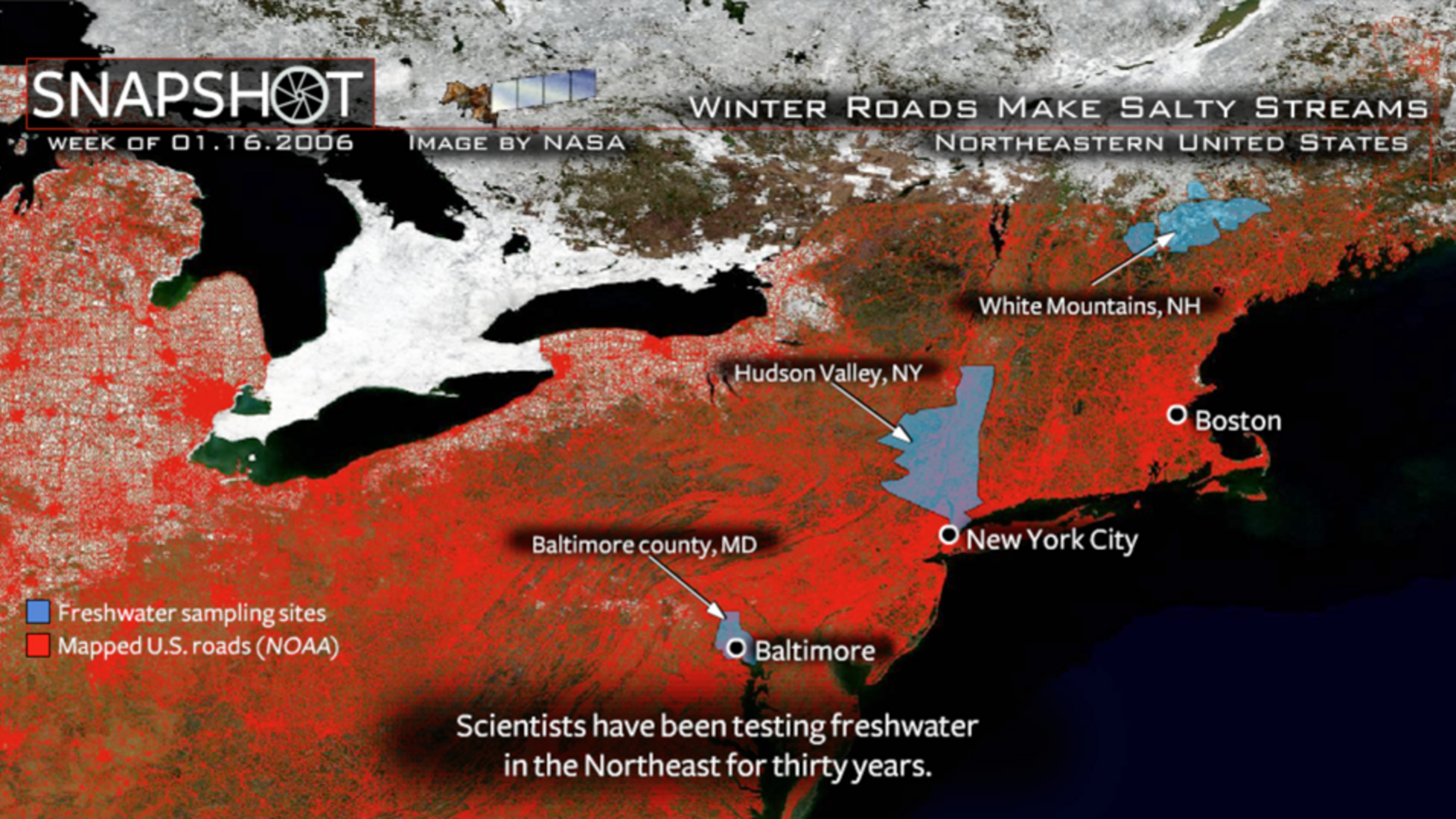Winter Roads Make Salty Streams Graphic Organizer
Part of the Ecology Disrupted Curriculum Collection.

DOWNLOADS
Download the files below to use offline, or to incorporate into your own lesson planning tools.
Winter Roads Make Salty Streams video
HD video (220Mb)
Winter Roads Make Salty Streams graphic organizer
Winter Roads Make Salty Streams teacher's guide
TEACHER'S GUIDE
Recall the Ecology Disrupted curriculum learning goals:
- Human daily life can disrupt ecological function leading to environmental issues.
- Scientists can collect data to investigate human impact local ecology.
Before the students begin watching the additional Bulletins, ask them to complete the graphic organizer for Winter Roads Make Salty Streams without watching the Bulletin. This exercise should familiarize the students with the graphic organizers.
While watching the Bulletins they will complete a graphic organizer with the following questions:
- What abiotic factor(s) have people changed and what is the impact on the biotic factors in the ecosystem?
- What is the evidence/data for your conclusion?
- How has daily life contributed to this change and how is it affected?
- What are possible solutions?
Solutions Background: Alternatives to salt
Calcium Magnesium Acetate (CMA) is a combination of dolomitic limestone (a very common rock), and acetic acid (vinegar) is a viable alternative to road salt. It was developed in 1987 and has since been extensively tested. Scientists have found that it is significantly less harmful for the environment than salt and it works well in temperatures as low as 23° F. Unfortunately, it is much more expensive than road salt. One way to combat the cost is to mix 20% CMA with 80% salt, which is more effective at melting ice than either substance alone, and less harmful for the environment than pure salt.
A second solution is to grow plants that like salt water near roadways. These plants survive much better in salt rich environments, and they can be used as a buffer for other plants and waterways. It is important that these plants are native to the area or they will cause a new set of environmental problems.